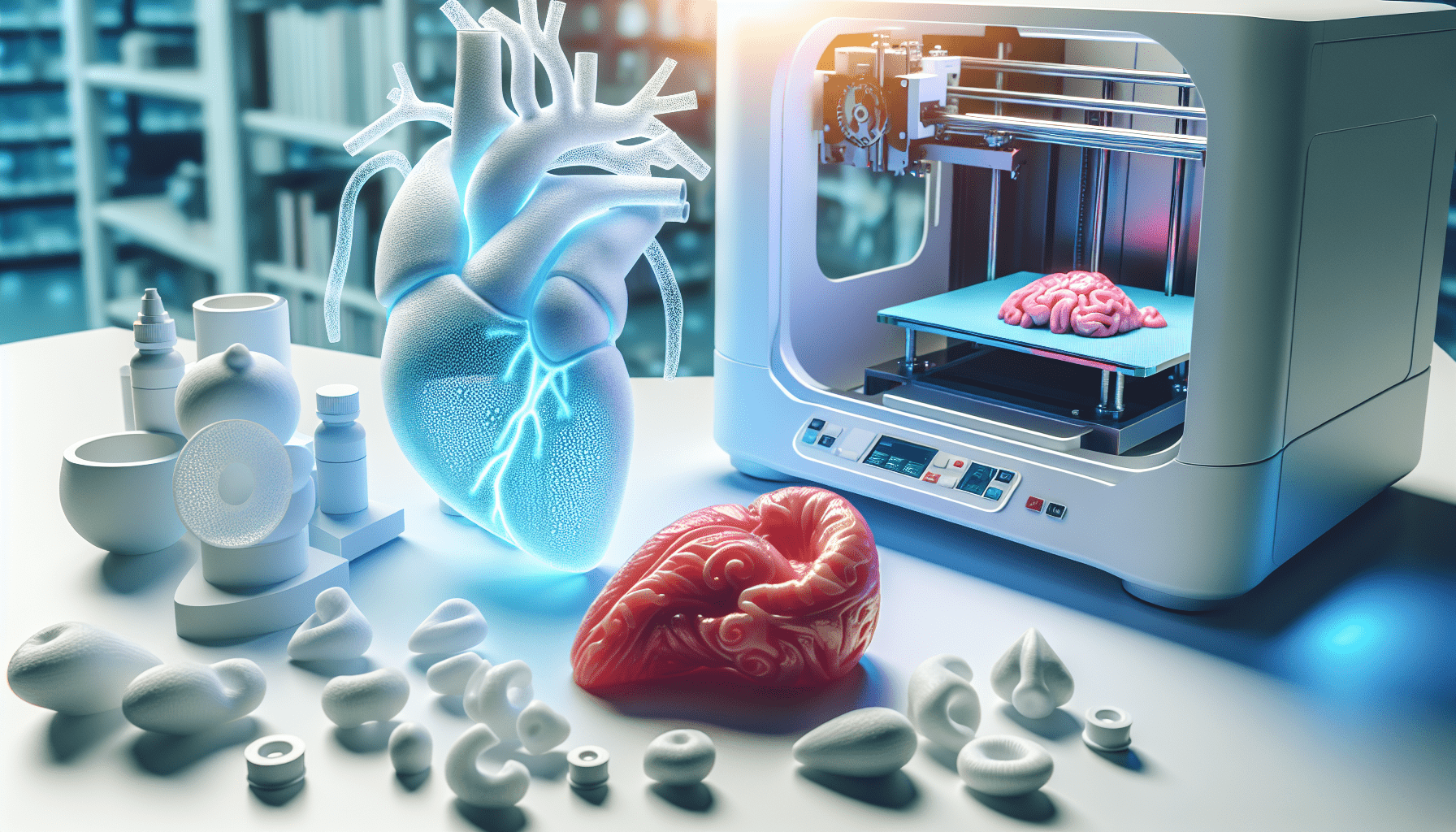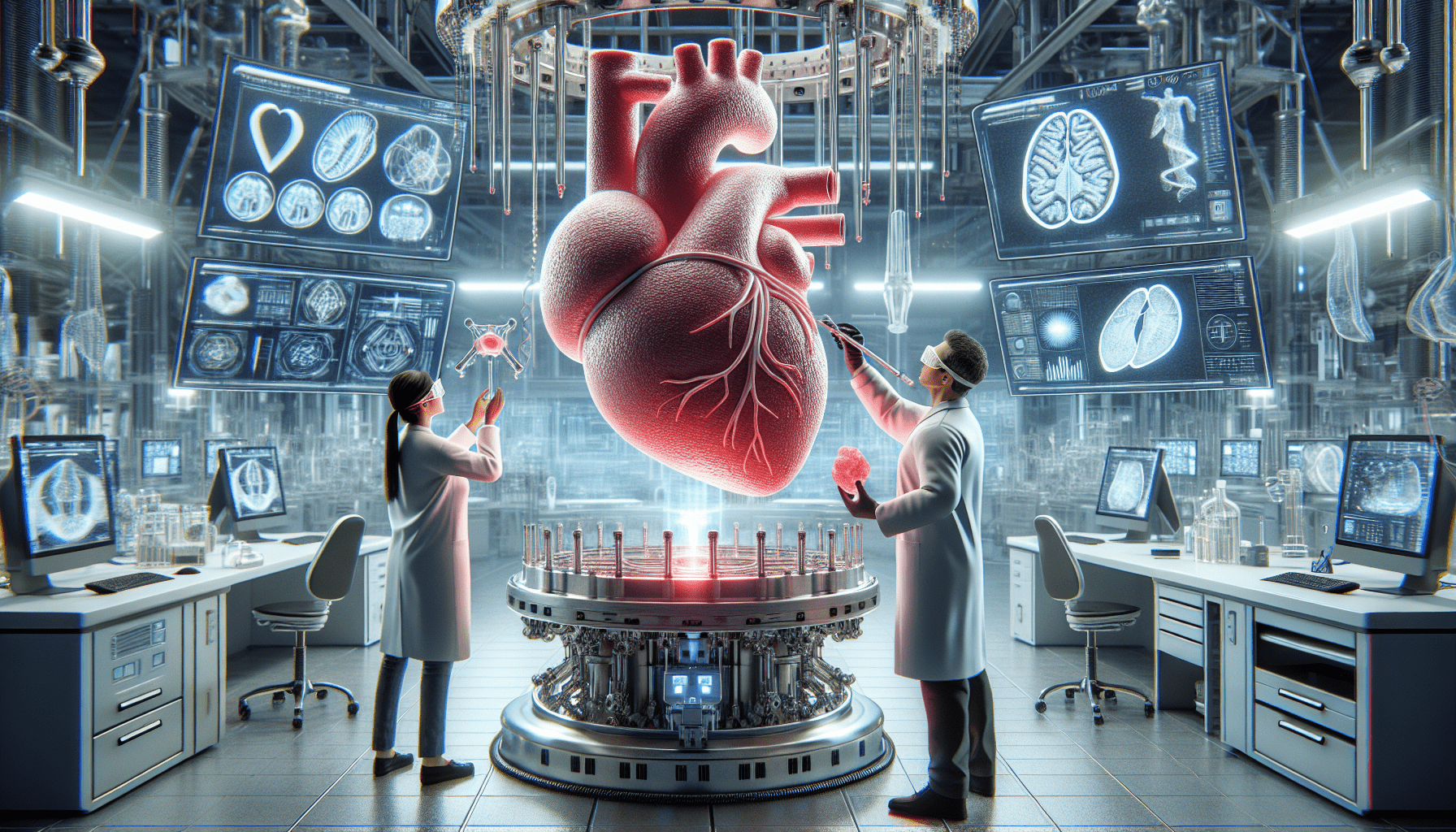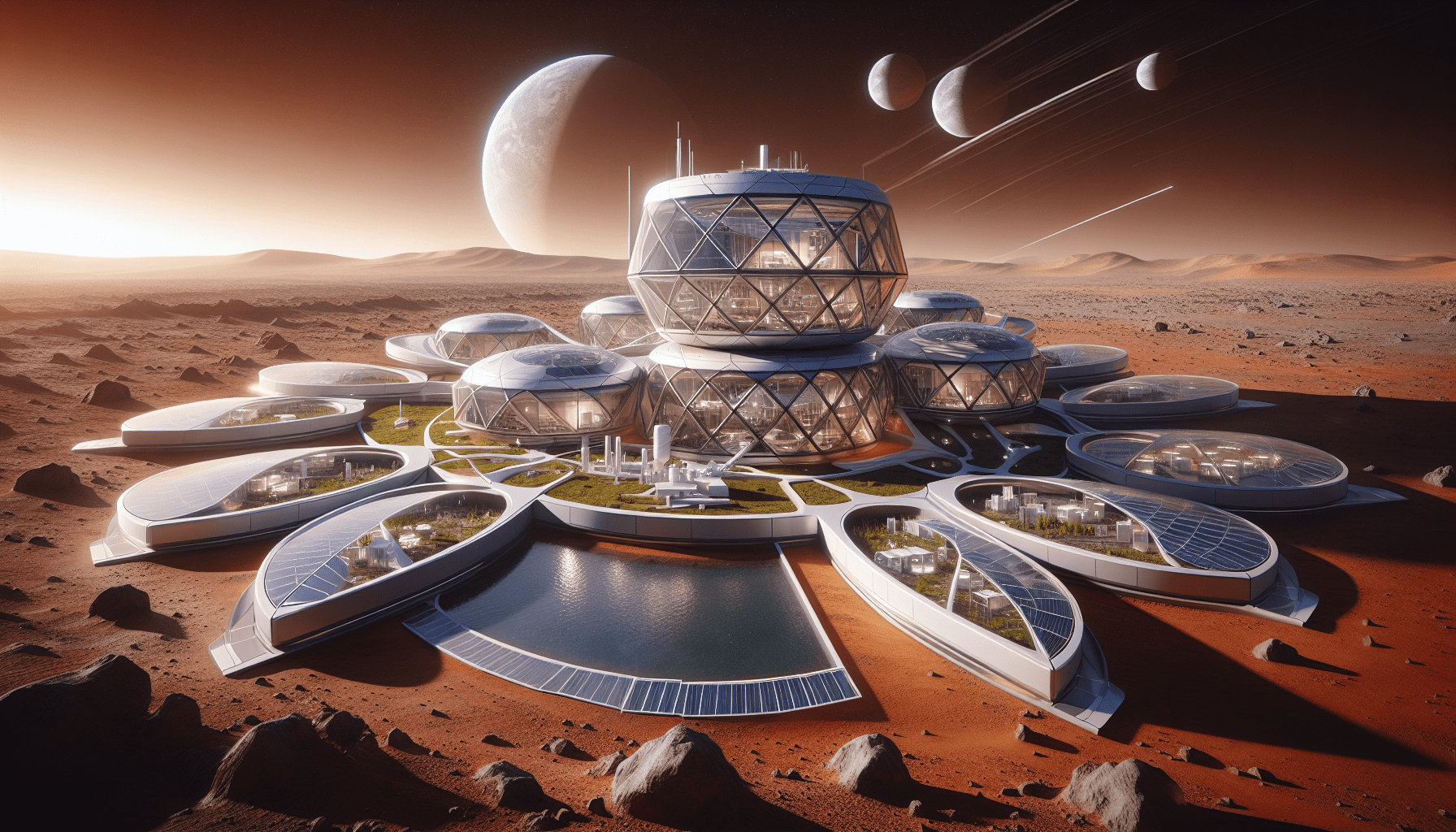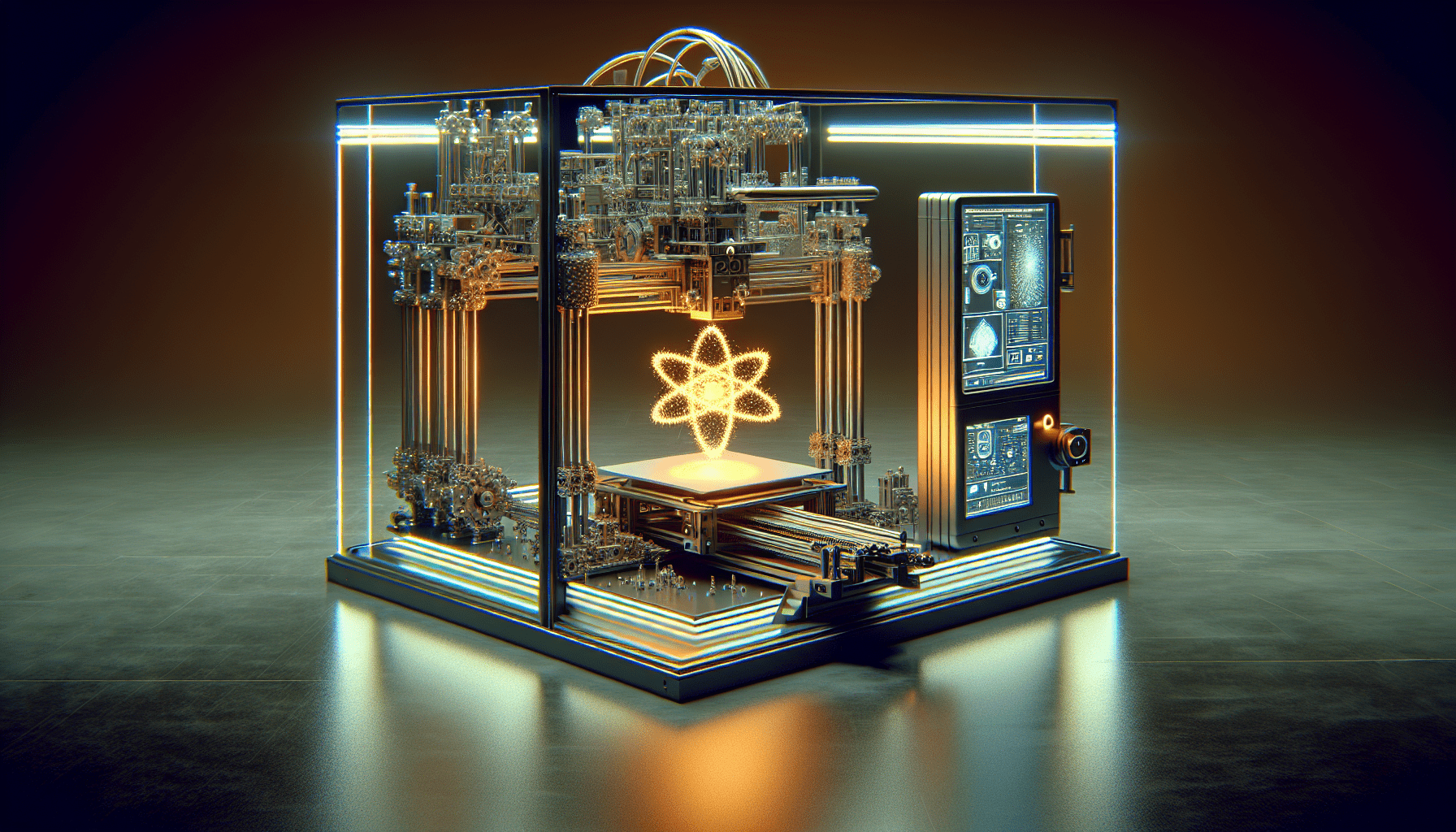Bambu Lab A1 Mini 3D Printer, Support Multi-Color 3D Printing, Set Up in 20 Mins, High Speed & Precision, Full-Auto Calibration & Active Flow Rate Compensation, ≤48 dB Quiet FDM 3D Printers
$399.00 (as of June 18, 2025 23:32 GMT +00:00 - More infoProduct prices and availability are accurate as of the date/time indicated and are subject to change. Any price and availability information displayed on [relevant Amazon Site(s), as applicable] at the time of purchase will apply to the purchase of this product.)The future of organ transplants may be revolutionized by 3D printing. A team of scientists in Gothenburg are exploring the possibilities of using 3D bioprinting to replicate human organs. Cellink, a company at the forefront of this technology, has already utilized 3D bioprinting in cancer treatments, created liver models for drug screening campaigns, and assisted beauty brands in becoming cruelty-free. The researchers are now working towards using bioprinted cartilage to help patients with muscle issues, and there is hope that this technology could eventually generate organs for those in need of transplants. While there is still much progress to be made, the potential for 3D printing to revolutionize organ transplants is a promising one.

$30 off $400+ Anycubic Products with code AC30OFF
The History of Organ Transplants
Organ transplants have revolutionized the field of medicine and saved countless lives. The first successful organ transplant took place more than 70 years ago, marking a significant milestone in medical history. It was a kidney transplant performed in 1954 by Dr. Joseph Murray and his team at Brigham Hospital in Boston.
Since then, the field of organ transplantation has made great strides. With the advancement of surgical techniques, immunosuppressive medications, and better understanding of organ compatibility, the success rates of organ transplants have significantly improved. Today, organs such as hearts, lungs, and livers are among the 100,000 organs replaced every year.
One of the key factors driving this progress is the importance of organ donation. People who wish to donate their organs can now have their names put on a computer registry, making it easier to match donors with recipients. Initiatives like the donor register have helped increase the availability of organs, giving hope to those in need.
The Challenges of Organ Transplants
While organ transplants have enabled life-saving treatments, they also come with their fair share of challenges. One of the major challenges is the long waiting times for organs. Due to the shortage of available organs and the demand from patients, the waiting list for an organ transplant can be excruciatingly long. This wait can have a significant impact on the physical and emotional well-being of patients.
Matching donors and recipients is another hurdle in organ transplantation. For an organ transplant to be successful, the donor’s organ must be a good match for the recipient. This involves considering factors such as blood type, tissue compatibility, and size constraints. Finding the perfect match can be a complex process and often prolongs the waiting times for patients.
Additionally, the size and compatibility constraints of organs pose a challenge. Transplanting organs from larger donors into smaller recipients can be technically challenging. Ensuring the compatibility of the transplanted organ with the recipient’s body also requires careful consideration.
Buy Photon Mono M5 Get Free 1KG Resin
The Potential of 3D Printing in Transplants
With the rapid advancement of technology, researchers are exploring the potential of 3D printing in the field of organ transplantation. 3D bioprinting, a cutting-edge technology, allows for the creation of artificial organs using a patient’s own cells. This innovative approach holds great promise in overcoming the challenges of organ transplantation.
The process of 3D bioprinting involves using bioinks, which are a combination of different types of cells and nutrient molecules. These bioinks are layered to mimic the structure of human organs, creating a functional organ model. This technology has already been used successfully in various applications, such as cancer treatments, liver model development for drug screening, and even assisting beauty brands in becoming animal cruelty-free.
Current Applications of 3D Bioprinting
The applications of 3D bioprinting in the field of medicine are vast. One of the current applications is in cancer treatments. By printing cancer tumors, researchers can create personalized treatments for patients without subjecting them to lengthy and potentially harmful drug trials.
Another significant application of 3D bioprinting is in drug screening using liver models. These artificial models allow researchers to test the effectiveness and safety of new drugs without relying on animal testing. This approach not only saves animals from unnecessary suffering but also provides more accurate results for human drug response.
Furthermore, 3D bioprinting has the potential to assist in the development of cartilage tissues for patients with muscle issues. By creating bioprinted cartilage, researchers aim to provide patients with enhanced healing capacities and improved treatments for conditions such as osteoarthritis. This field of research shows great promise in improving the quality of life for patients with muscle issues.

The Promise of Bioprinted Cartilage
Patients with muscle issues often face significant challenges in finding effective treatments. Traditional approaches to cartilage repair have limitations, and many patients suffer from limited mobility and chronic pain. The development of bioprinted cartilage offers hope for these individuals.
Bioprinted cartilage has the potential to provide tailored treatments for patients with muscle issues. By using a patient’s own cells, researchers can create cartilage tissues that are perfectly matched to their unique needs. This personalized approach is expected to lead to improved healing capacities and better long-term outcomes.
The benefits of bioprinted cartilage are not limited to sport injuries; it can be beneficial for elderly patients or those suffering from conditions such as osteoarthritis. The regenerative properties of bioprinted cartilage offer the potential for significant improvements in patient outcomes and a reduction in pain and disability.
Safety and Efficacy of Bioprinting
As with any new medical technology, ensuring safety and efficacy is of utmost importance. Ongoing studies and research are being conducted to evaluate the safety of bioprinting methods. It is crucial to ensure that the printed organs are biocompatible, free from defects, and capable of proper functionality.
Although further studies are required, the potential benefits of bioprinting are immense. One significant advantage is the potential to save time and money. By bypassing the need for organ donors and the waiting list, bioprinting could provide a readily available source of organs, reducing the waiting times for patients.
Additionally, the ability to print organs with higher precision and accuracy can result in better surgical outcomes. Surgeons can have a detailed understanding of the organ’s structure before the procedure, allowing them to plan and perform the surgery with greater confidence.

The Future of Organ Transplants
The future of organ transplants looks promising with the advent of 3D printing technology. Advancements in 3D bioprinting techniques and materials are paving the way for the generation of functional organs for transplantation.
Realizing the full potential of 3D printing in organ transplants will require further research and development. While simpler organs may be available in clinics within the next 15 to 20 years, the production of fully functional internal organs will take more time.
Nevertheless, the impact of 3D printing on patients awaiting organ transplants cannot be understated. The ability to reduce the wait for organ transplantation and provide patients with personalized and perfectly fitting organs has the potential to revolutionize the field.
The Impact on Patients
The impact of 3D printed organs on patients awaiting transplants is profound. By reducing the wait times, patients can receive life-saving treatments more quickly, improving their chances of survival. The emotional and psychological benefits are also significant, as patients no longer have to live in constant uncertainty or fear.
Furthermore, 3D printed organs offer the potential for improved outcomes and quality of life. The personalized and perfectly fitting organs can enhance surgical success rates and reduce the risk of complications. Patients can regain lost functionality and enjoy a better quality of life post-transplantation.
The ability to have an organ that didn’t require someone to die can also alleviate some of the ethical concerns associated with traditional organ transplantation. By growing organs from a patient’s own cells, the reliance on donor deaths can be eliminated, offering a new paradigm for organ transplantation.
Ethical Considerations
The ethical considerations surrounding 3D-printed organs are complex and multifaceted. The concept of creating organs without relying on donor deaths raises questions about the sanctity of life and the moral implications of artificially generating organs.
However, this technology also brings the potential for personalized and perfectly fitting organs. By growing organs from a patient’s own cells, the compatibility issues and the need for immune-suppressing medications can be significantly reduced. This has the potential to improve patient outcomes and reduce the risk of organ rejection.
It is essential to engage in ethical discussions and establish guidelines to ensure the responsible and ethical use of 3D printing technology in organ transplantation. Balancing the potential benefits with the ethical considerations is crucial to ensure that the advancements in this field are used for the betterment of humanity.
Conclusion
The promising advancements of 3D printing in organ transplants offer hope for patients worldwide. The potential to generate organs using a patient’s own cells has the capacity to revolutionize the field of medicine. While there are challenges to overcome, the progress made so far in 3D bioprinting is remarkable.
The ability to reduce waiting times for organ transplantation and provide personalized and perfectly fitting organs is invaluable. This technology has the potential to improve patient outcomes and quality of life. However, it is crucial to address the ethical considerations and ensure the safety and efficacy of bioprinting methods.
With further research and development, the future of organ transplants looks promising. The timeline for fully functional internal organs in clinics might be a few decades away, but the impact on patients will be substantial. The hope of 3D printed organs is within reach, with the potential to reshape the landscape of organ transplantation.
$30 off $400+ Anycubic Products with code AC30OFF








